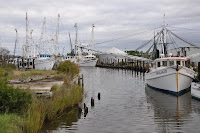
Really had a great time in Austin, Texas, thanks to my son Jeremy, daughter and son-in-law (Jamie and Guillermo) all of the extended family and friends, and of course little Mateo. Were it not for his 1st birthday celebration, none of this would have happened.
After a great day of celebration, there of
course way bit of cleaning up to be done. Somehow, I avoided the bulk work and was sent out to take Mateo for a walk. I'm still confused though. I did all the walking (up and down the hilly subdivision), while Mateo dozed comfortably in the "walker;" I think it should be called a "rider."
The real highlight of the day came at dusk, when we set out on a ferry boat ride on Lady Bird
Lake, to see over a million bats begin their nightly ritual and fly out from under the Congress Avenue Bridge, in search of their evening meal.
The Congress Avenue Bridge is home to the largest urban colony bat population in North America, and is Austin's best-known tourist attraction.
An estimated 1 1/2 million bats make their spring, summer and fall home under the Congress Avenue Bridge. The bats, having found refuge by

virtue of a fateful design, unknowingly, built into the bridge. Today this same design is now incorporated into similar bridge designs by intent, in order promote the growth of future bat colonies.
Specifically, that design incorporates a narrow 3-5 inch wide crevice with a recess of 12 inches or more; providing a haven (or perhaps heaven) for bats. The Congress Avenue Bridge has several such crevice-recesses which run the full length of the underside of the bridge.
Our guide for the evenings cruise explained that the bats leave at just after dusk in quest of their evening meal. They will, we were told, normally fly out a distance of 150-200 miles, in search of insects, and return before daylight. During their evening sojourn, they will devour up to 1 1/2 times their own weight in insects, in a single night. Though a mature bat normally averages a weight of only 3 ounces, a quarter of a pound (or more) of insects - is a lot of insects! In total, it is estimated that this single colony of Mexican free-tail bats consumes from 10,000 to 30,000 POUNDS of insects in just one evening.
When one considers the amount of undue pesticides that are conserved by virtue of this single colony of bats, and then, multiplies this by all the existing (and potential) bat colonies, it is clear that, we owe a debt of gratitude to these - ugly little "critters."
The whole event, from the first bats departure until the last, takes several minutes (we left after 10-15 minutes, and they were still departing in large numbers).

Many of the bats have already departed on their southward migration to Mexico, which we were told began in early October and will end in mid November. And so, what we were seeing, though impressive indeed, was not even the full spectacle. In August at the peak of the season, it must be truly SPECTACULAR!
Although, seeing the flight of the bats is, of course, the highlight of evening's ferryboat cruise; the entire event is a pleasant, relaxing and very affordable (only $10.00 per person) evenings entertainment. With the addition of some great photos provided courtesy of the Austin skyline, the night was a complete success.
























